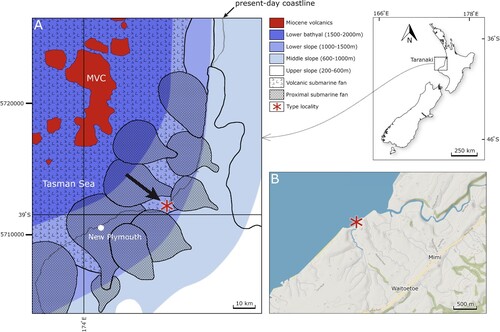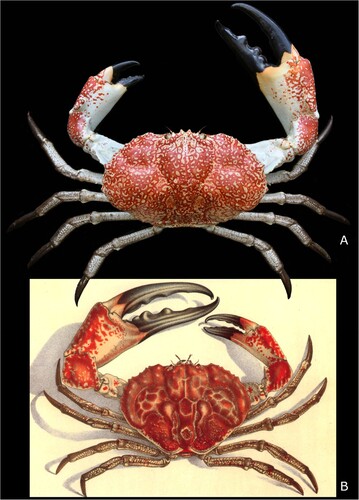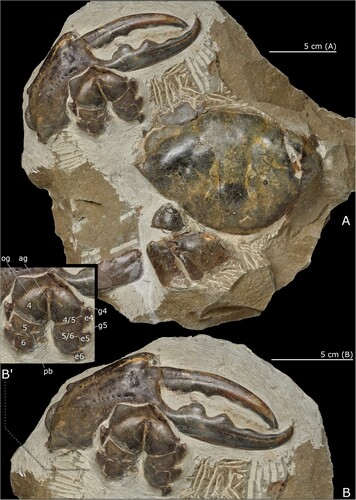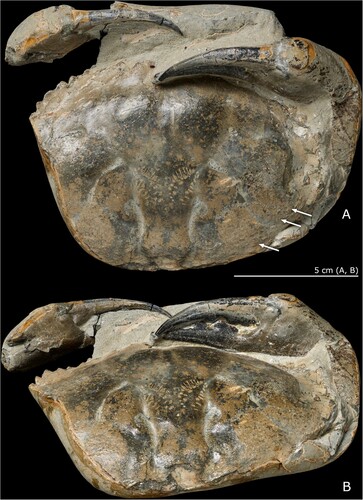Figures & data
Figure 1. A, Early Tongaporutuan (late Miocene) palaeogeographical map (modified after Arnot and Bland Citation2016; Sagar et al. Citation2019) of the Taranaki Basin, showing the present-day coastline and the location of the northern Taranaki coastal section. B, Waitoetoe Beach, near Waitoetoe Campsite, just south of the mouth of the Mimi stream, Urenui, Taranaki (North Island, New Zealand). Contains data sourced from the LINZ Data Service (https://data.linz.govt.nz/) licensed for reuse under CC BY 4.0 (https://creativecommons.org/licenses/by/4.0/). The type location of Pseudocarcinus karlraubenheimeri n. sp. is indicated by a red asterisk, just south of tuff sample location U-C-27 of Maier et al. (Citation2016).

Figure 2. The extant ‘Southern Giant Crab’, Pseudocarcinus gigas (Lamarck Citation1818). A, dorsal view of male specimen, maximum carapace width 220 mm, maximum major claw length 270 mm (photograph by Ondřej Radosta). B, after McCoy Citation1889, originally drawn by John James Wild, scanned from the reference and kindly provided by P. Davie.

Figure 3. Pseudocarcinus karlraubenheimeri n. sp., A, holotype, NMNZ CR.027704, showing dorsal carapace, thoracic sternum and major right cheliped (male); B, detail of right major cheliped and thoracic sternum; B’, annotated detail of thoracic sternum, abbreviations: 4, 5, 6, thoracic sternites 4, 5 and 6; e4, e5, e6, episternites 4, 5 and 6; g4, g5, gynglyme of thoracic sternites 4 and 5; 4/5, 5/6, thoracic sternal sutures 4/5 and 5/6; ag, axial groove; og, oblique groove; pb, press-button for pleonal holding mechanism. Photographs by Jean-Claude Stahl (NMNZ). Scale bars equal 50 mm.

Figure 4. Pseudocarcinus karlraubenheimeri n. sp., A, paratype, NMNZ CR.027703, showing dorsal carapace, with both left (minor) and right (major) chelipeds; arrows indicate larger granules on posterior carapace surface; B, oblique view showing fingers of both chelipeds. Photographs by Jean-Claude Stahl (NMNZ). Scale bars equal 50 mm.

Data availability statement
All data supporting the findings of this study are available within the paper and its references.

